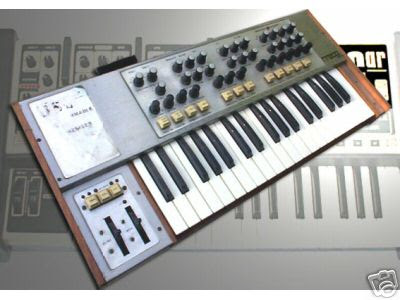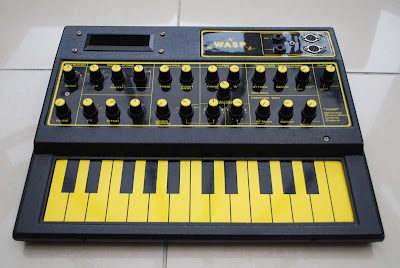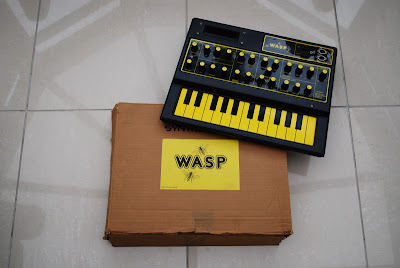
I remember seeing this a few years ago on the 'bay. The claim was that it was the prototype of the Oxford Synthesizer Company's OSCar in the case of a Moog Source.
Via the AH archives:
"it was confirmed in SOS. There's an article on it. you can even see it in
the auction.

I don't think that many peopel want it because it's not working properly.
It's collectible, but that's all, not so overly usable..."
"I also think that this is the one described in a issue of Future Music
some years ago when they did a interview with Lionrock. I don't
remember the issue, though I know that I still have it. Apparently, it
was stolen shortly after the interview was completed. I saw the SOS
article too and, since the owner of the piece at that time had worked
with Lionrock, I assumed that the synth was returned."

I found
this article on Sound on Sound, but no mention of the word prototype or moog (I need to read the whole thing). But I did find this information that I've also forgotten over the years. Chris Huggett, was the man behind the EDP Wasp, Oxford Oscar, Akai S1000, and finally the Novation Supernova. Pretty impressive.
From
Sound on Sound:
"Chris Huggett? In the same way that I had to go and get a proper job with E&MM and then Sequential to make a living, Chris eventually had to get a more reliable source of income. I put him in touch with Akai, for whom I was doing S900 sound development, and the next thing I knew he was writing the operating system for the new S1000. Chris worked for Akai behind the scenes on most of the sampler operating systems for more than 10 years until he grew frustrated with their refusal to let him work on the hardware design as well (with the Wasp and OSCar, he had of course done both). Having fostered Novation in its early days with help and advice, he eventually joined them full-time a couple of years back and is the guiding light behind the virtual technology of the Supernova. So a very British designer is once more working on a very British synth for a very British company."
Update via Turboskin in the comments: "Found the restoration of this exact Moog OSCar:
stereoping.com/"
Update 3/8/12: Bigger pics here:
Legendary Moog OSCar Up for Auction
 "Designed by Chris Huggett and built in the UK during the 1970’s.
"Designed by Chris Huggett and built in the UK during the 1970’s.



















































